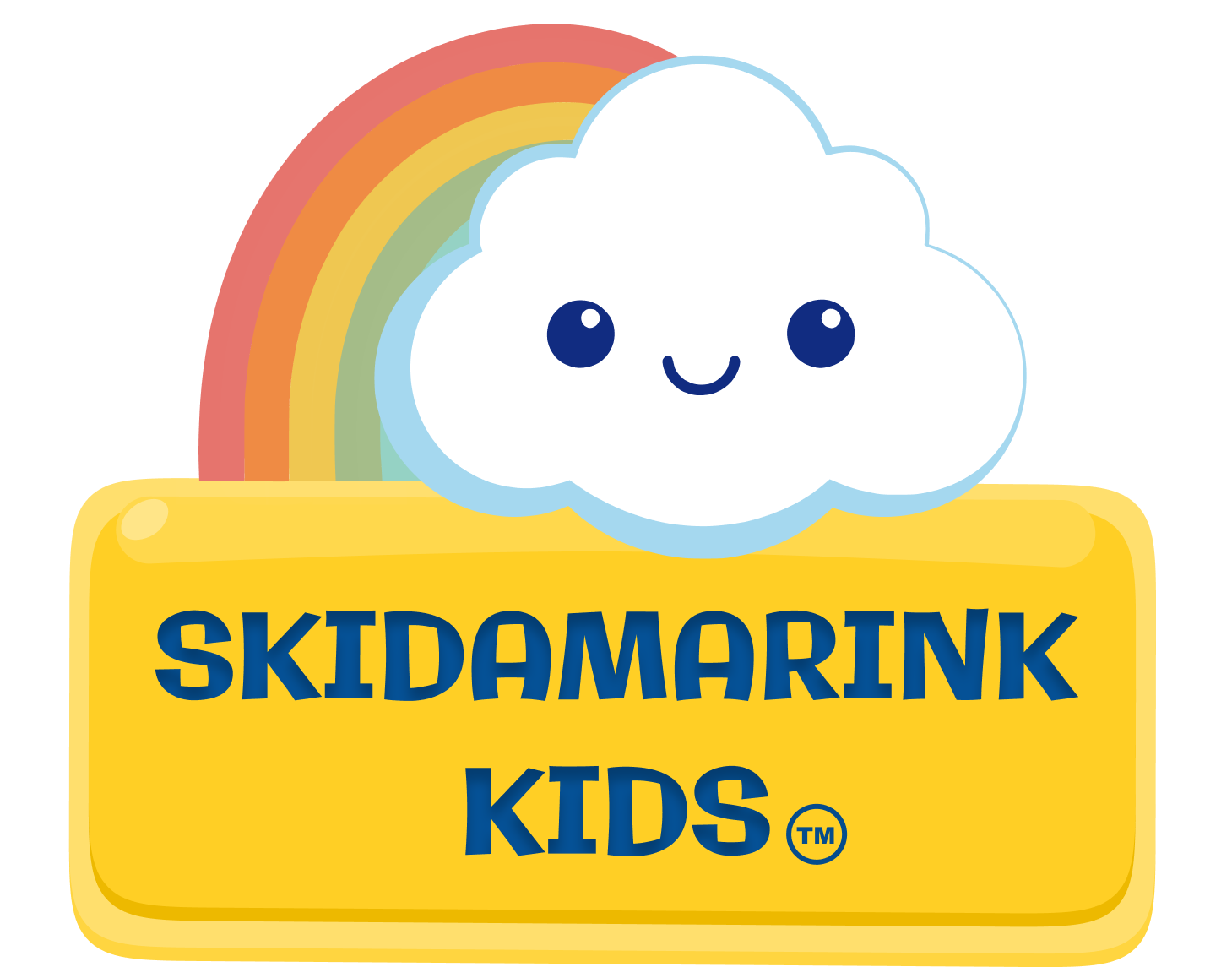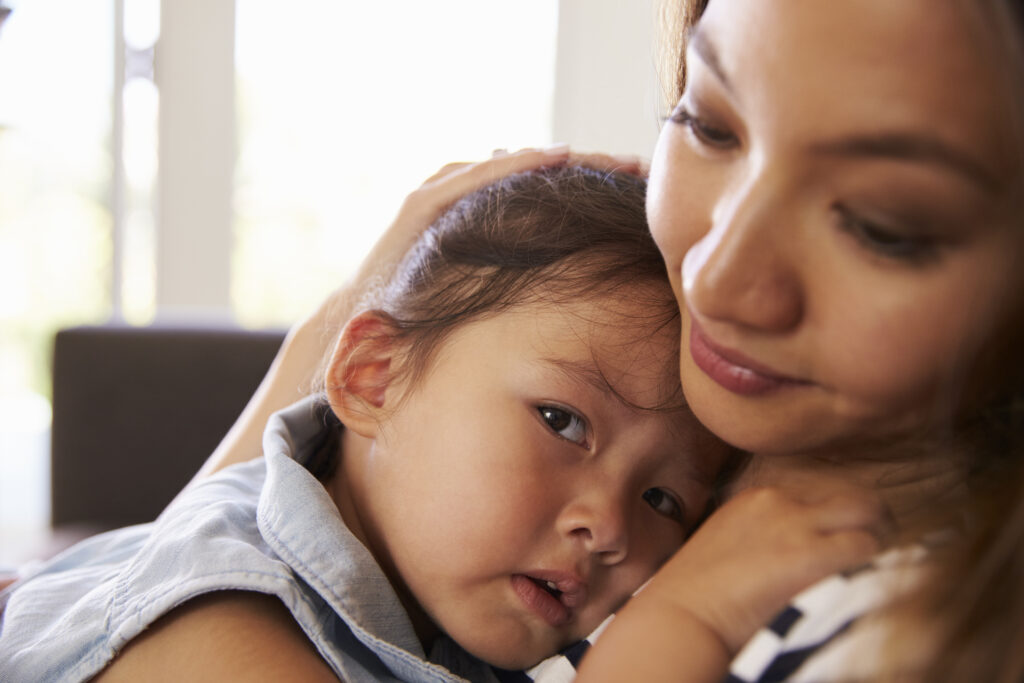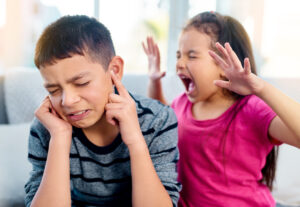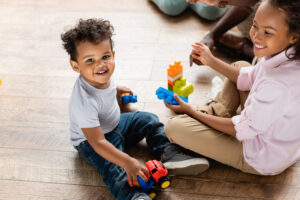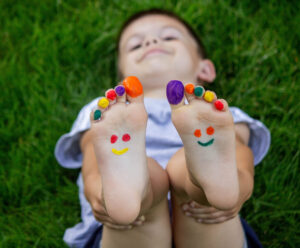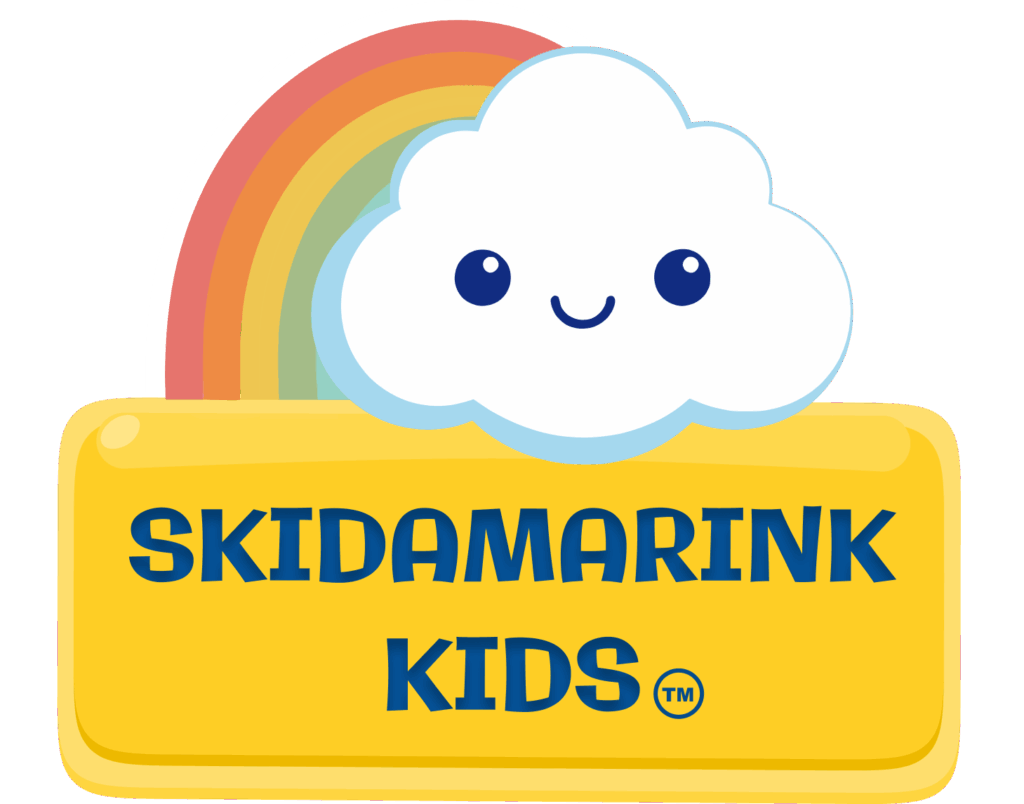Every parent struggles with knowing how to calm child naturally during difficult moments. As a mom who experienced this firsthand with my oldest, I understand that overwhelming feeling when your child can’t seem to settle. I was always searching for how to calm child without medication. This struggle led me to create the Tantrum Tamer App, which offers both in-the-moment strategies and proactive approaches to reduce meltdowns while building long-term self-regulation skills.
While managing meltdowns in the moment is important, what parents really want is to discover how to help their child naturally calm for lasting results. The secret lies in understanding how specific natural calming techniques kids respond to can stimulate the “brake pedal” side of your child’s brain, helping them pause, think, and naturally regulate their emotions.
To understand how brain imbalances that can occur during development can make it difficult for your child to naturally calm, check out my blog: “Why Your Child Can’t Self Regulate: The Hidden Brain Issue.” As a mom, I was shocked to realize that a lot of what we do, say, and the things in our environment make it hard for both our kids, as well as us to focus and regulate our behavior.
Quick Calming Techniques
Learning how to calm child naturally starts with these natural calming techniques kids respond to immediately. These direct strategies provide immediate relief for toddlers and older children who struggle with attention and emotional regulation because they trigger the “brake pedal” side of the brain.
Start with Yourself First
Regulate yourself first: Take deep breaths, practice gratitude, and soften your posture to give your child a sense of security.
Use a low tone of voice: This triggers the right side of the brain for calming effects.
Shift your focus: Move from frustrations with the situation to God’s grace and goodness. This big-picture thinking triggers the right side of your brain to help you stay calm and pause to think.
Focus on connection before correction: The priority is helping them calm down, not teaching in the moment. Save lessons for later.

Direct Right-Brain Stimulation Activities for Calming Your Child
Model gratefulness: Try saying “Guess what? I am thankful for you” or “I am thankful for your bright eyes and beautiful smile.” This gives them a sense of being loved and calms both your nervous systems.
Use calming colors: Surround your child with blues and purples. Greens are neutral, so they’re also a good choice. When possible, put away toys or objects with bright reds, oranges, and yellows when they’re overstimulated. These colors stimulate the “gas pedal” part of the brain that leads to difficulty with attention and regulation.
Add calming scents: Stronger smells stimulate the right side of the brain. Scents like peppermint, coffee, cedarwood, lime, eucalyptus, or lemon can create a calming effect. You can place a few drops of essential oils on their right collar since our sense of smell doesn’t cross brain sides. Avoid sweeter scents as they can trigger overstimulation.
Massage the left side of their body: Gentle massage to the left side of the body activates the right side for a calming response. Try stroking their left hand for one to two minutes with your hand flat, moving from their palm to their fingertips repeatedly. You can also massage the sole of their left foot from heel down and across the pads of their foot. This helps with reflex integration, calming, and increases awareness.
Encourage big body movements: Jumping, climbing, and heavy work like carrying items helps organize their nervous system.
Use silliness and laughter: Funny faces and playful interactions disarm fear and naturally calm the stress response.
Practice deep breathing together: Slow, intentional breaths activate the body’s natural calming system.
Move objects from right to left: Have them track toys or balls moving against their typical left-to-right visual pattern.
Move objects upward: Have them track toys or balls moving against their typical visual pattern of looking down at screens or toys. This activates the big-picture part of the brain to increase awareness and interactions.
Focus on co-regulation: Stay calm and present while they work through their emotions. Their brains haven’t developed all the skills they need to do this by themselves yet. The goal should be helping them calm down. Save teaching moments for later. Give them time to process and avoid negative comments. This doesn’t mean giving in.
Want More Ways to Start Helping Your Child with Calming Right Now? Here are Some Resources for Fast Acting Support:
🎥 Video 1: Signs of Fear Paralysis Reflex
Learn the specific signs that indicate your child may have a retained Fear Paralysis Reflex. This is one of the most common retained reflexes. It affects emotional regulation, sleep and anxiety, as well as balance. Since this reflex should have integrated before birth, addressing this one first helps the other ones integrate more easily. Please Like, Share and Subscribe to help other parents find this support. Watch: Signs of Fear Paralysis Reflex →
🎥 Video 2: Fear Paralysis Reflex Exercise Demonstration
Watch me demonstrate this simple exercise on both a 5-month-old and a 4-year-old. This exercise is especially beneficial for children with high anxiety, sleep issues, and emotional regulation problems. this includes children with ADHD and autism. You can start doing this at home today. Please Like, Share and Subscribe to help other parents find this support. Watch: Exercise Demonstration→
Whole Tones music – harnesses the power of music through solfeggio frequencies, promoting enhanced sleep, stress relief, and holistic wellbeing
Calming Corners or comfort tools – provide toys or comfort items for little ones, or guide older children to a designated calming corner. See my blog Calm Down Corner for Kids: Create a Self-Regulation Space or download the Tantrum Tamer App, which has amazing tools to promote calm including a calming corner creator!
When to Use These Techniques to Calm Child Naturally
Try these activities throughout your daily routine and monitor to see which ones your child responds to the most. Visual exercises and massage can be completed 2-3 times a day.
These natural approaches work particularly well for infants and toddlers. During this stage of development, the right side of the brain is designed to be setting up a good foundation. Although every child is different, these techniques can also be very beneficial for children who show:
- Difficulty with social interaction or decreased eye contact
- High emotional reactions or frequent meltdowns
- Rigid thinking or trouble with transitions
- Sensory sensitivities or safety awareness concerns
- Decreased speech or communication challenges
- Developmental delays
Important cautions:
- Avoid trying the direct right-brain stimulation activities if your child has high muscle tone (such as in cerebral palsy) or shows signs of learning disabilities, as they may need different types of stimulation.
- For children with diagnosed conditions like ADHD or autism, I have seen great benefits from using these techniques. Just remember that individual professional support is recommended for the best outcomes.
- This information is for educational purposes only and is not intended as medical advice. Consult your child’s pediatrician with any developmental concerns.
Download Tantrum Tamer: Transform Chaos Into Calm. Build the Neurological Foundation for Happy, Capable, Self-Regulated Kids.
Building Long-Term Calming Through Brain Balance
Understanding how to calm child naturally goes beyond immediate techniques. These natural calming techniques kids respond to help develop stronger internal regulation systems over time. Our kids are growing up in a world that tends to stimulate the left side of their brains, which is the “gas pedal,” more than the “brake pedal.” This leads to a shift in development that can make it difficult for kids to focus and have self-control. By adding activities that stimulate the right hemisphere, you can help counterbalance this.
You can still encourage activities that foster fine motor skills and learning. Just make sure you’re giving your child activities that develop each side. By adding these activities, not only will you help improve brain balance for your child, but doing these together will help your ability to self-regulate too. This will make connecting with your child more fun for you both.
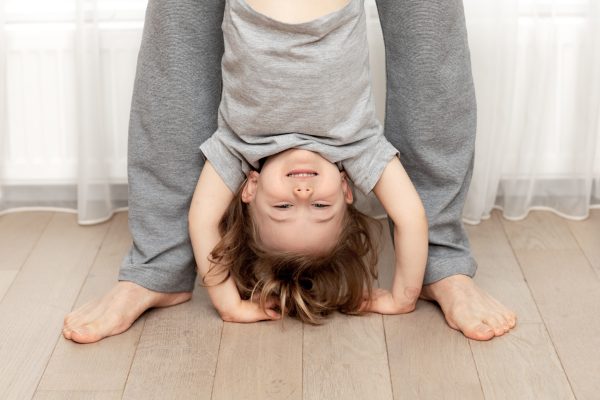
Movement and Sensory Experiences for Lasting Change
- Prioritize unstructured outdoor play: Outside play provides movement and sensory input. For example, the blue sky triggers the “brake pedal” part of our brain
- Include vestibular activities: Try swinging, spinning, and safe upside-down play
- Create sensory-rich experiences: Include textures, water play, and nature exploration
- Choose whole-body activities: Focus on activities that require whole-body movement and challenge their balance rather than just fine motor skills
- Add outdoor challenges: These naturally encourage problem-solving
- Encourage bilateral coordination: Try clapping or catching balls
- Include visual activities: Play ball, look at birds flying, etc. Encourage looking at things going upward or to the left, as kids look down more (phones and writing) and to the right (reading books) for balanced input
- Activities to increase body awareness such as identifying body parts and drawing a person
Building Emotional Awareness and Social Connection
- Encourage eye contact: Use face-to-face interactions and games
- Foster Pretend Play: Provide props for imaginary play
- Practice turn-taking: Build patience and social awareness through activities that require waiting
- Look at facial expressions: Show pictures with different emotions to develop empathy
- Spend one-on-one time together: This builds connection and security
- Teach Imitation Skills: Imitate your child and encourage your child to imitate silly noises and facial expressions
Activities That Strengthen Self-Control
- Play stopping and starting games: Try freeze dance or Red Light, Green Light.
- Practice waiting activities: These build patience over time.
- Use the “First, Then” approach: This helps children understand sequences and expectations.
- Encourage delayed gratification: Practice saving, waiting until later, and other patience-building activities.
Environmental Support for Lasting Calm
Creating the right environment supports your child’s natural ability to stay regulated.
Nutrition and Physical Needs
- Focus on whole foods: Minimize processed items, sugars, and artificial dyes
- Encourage regular water sipping: Proper hydration supports brain function, and the rhythmic sipping naturally regulates breathing patterns
- Establish consistent routines: Include regular meal times, sleep schedules, and daily activities
- Ensure adequate protein: This supports stable blood sugar throughout the day
Sensory Environment
- Use calming colors: Include blues and purples in your child’s space
- Limit overstimulating colors: Reduce bright reds, oranges, and yellows when your child is struggling
- Incorporate calming scents: Try coffee, lemon, peppermint, or eucalyptus
- Limit sweeter scents: Floral fragrances can be overstimulating for some children
- Choose calm toys: Select activities without excessive lights, sounds, or fast movement
- Use natural lighting: This supports natural rhythms and regulation
Screen Time and Stimulation
- Avoid screen time for children under 2: When possible, eliminate screens for very young children
- Choose slower-paced content: For older children, select less stimulating shows and limit time
- Limit high-stress content: Avoid violent or stressful content that activates fight-or-flight responses
- Use a calm tone of voice: This is especially important during difficult moments
Supporting Natural Development
Learning how to calm child naturally works best when we support their natural developmental timeline.
- Support natural development: Avoid rushing fine motor or academic skills before your child is ready.
- Pair learning with movement: Have your child crawl over couch cushions to find letters for an alphabet puzzle, or play balloon volleyball before sitting down for writing practice.
- Allow hand dominance to develop naturally: Don’t force your child to use a particular hand.
- Focus on play-based learning: Engage the whole child through activities they naturally enjoy.
Connection and Laughter for Emotional Regulation
Building strong emotional connections helps children feel safe and naturally calms their nervous system.
- Encourage laughter and playful interactions: These reduce anxiety and build connection.
- Use silly voices and funny faces: Gentle humor helps your child shift from stress to joy.
- Engage in activities that make your child laugh: Laughter naturally activates the calming response and strengthens your bond.
Biblical Foundation for Right-Brain Development
The Bible tells us we can find rest in God. Exodus 33:14 says, “My presence will go with you, and I will give you rest.” Ever wonder how this is possible in the chaos of everyday life? God designed our right side of the brain, which starts to develop first, to do just that. It helps calm our nervous system and gets our bodies into a “rest and digest” state.
Focusing on getting these right-brain activities into our kids’ daily routines, along with spiritual habits, is critical for self regulation and calming. We focus so much on academic learning; however, pushing this over foundational skills has made it harder for kids to learn.
You can help their brains develop in a way that will make academic learning more possible and create happier kids by:
- Calmly responding to them in love (which doesn’t mean giving in)
- Teaching them how to treat others with kindness
- Helping others
- Having self-control
- Being thankful
- Being positive
- Teaching them to praise God
God’s design for brain development aligns perfectly with His call for us to find rest, peace, and joy in Him. By supporting our children’s right-brain development, we’re actually helping them access the calm and regulation that God intended for us to experience.
Creating Lasting Change
The beauty of learning how to calm child naturally is that these approaches work with your child’s developing brain rather than against it. When you consistently provide natural calming techniques kids respond to, you’re not just managing difficult moments – you’re actually building the internal systems your child needs for lifelong emotional regulation.
Every child will still have challenging moments as they grow and develop. The difference is that children who learn through these natural calming techniques have better internal tools to handle life’s ups and downs. They can pause before reacting, read social situations more accurately, and recover from upsets more quickly.
These natural approaches to learning how to calm child naturally provide the foundation for academic success, healthy relationships, and emotional resilience that will serve them throughout their lives.
Key Points to Remember
- Every child develops differently
- No need for parent guilt about past choices
- Small changes can make big differences
- Focus on progress, not perfection
Want to learn more?
Read more on this blog series:
- Check out our companion blog- “Child Self Regulation: The Brain Balance Key to Success” to understand the connection between self-regulation and brain development.
For More Detailed Information and Resources, Explore:
- To learn more about Brain Balance visit Brain Balance Centers or check out the book “Disconnected Kids” by Dr. Robert Melillo
- “Balanced and Barefoot” by Angela J. Hanscom is a resource for great insights on movement and outdoor play
- “Easy to Love, Difficult to Discipline” by Dr. Becky Bailey – Comprehensive strategies for positive discipline
- “If I Have to Tell You One More Time” by Amy McCready – Practical solutions for common behavior challenge
– Kendra
